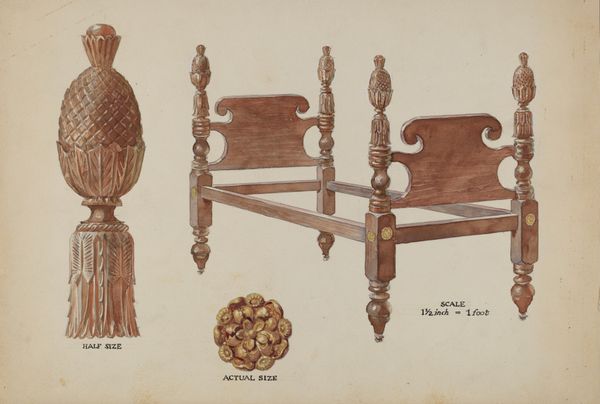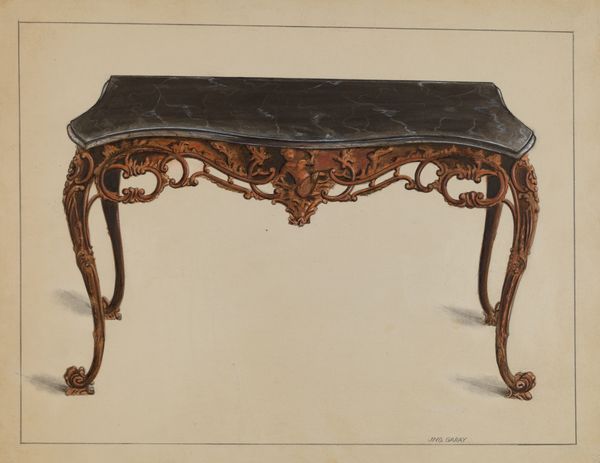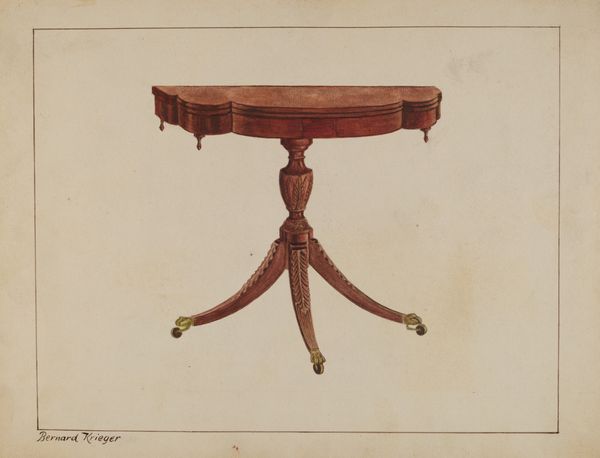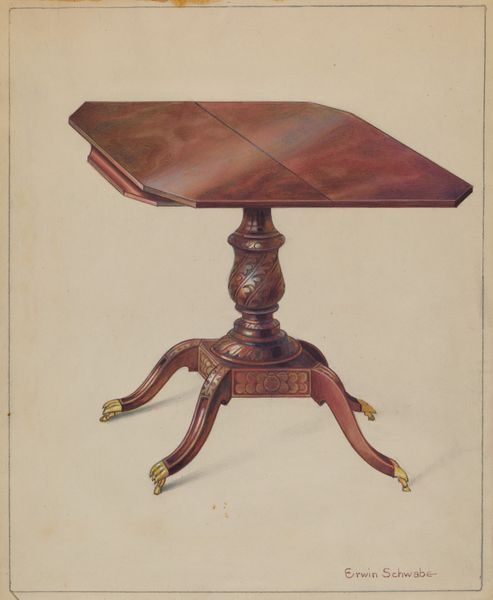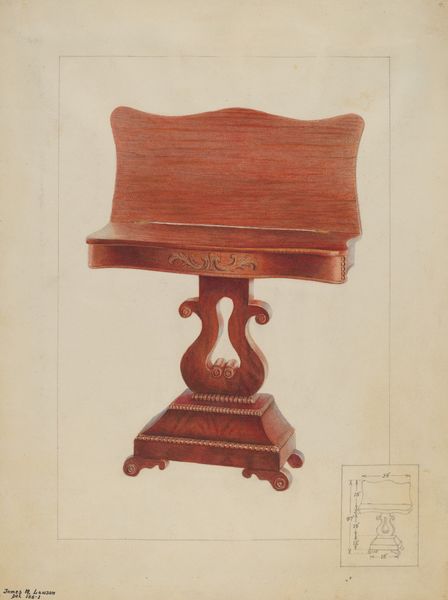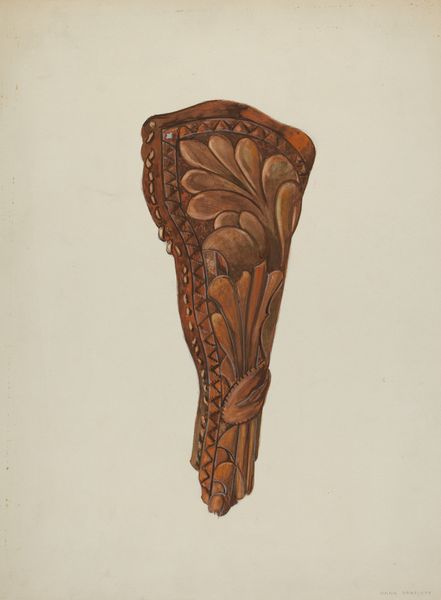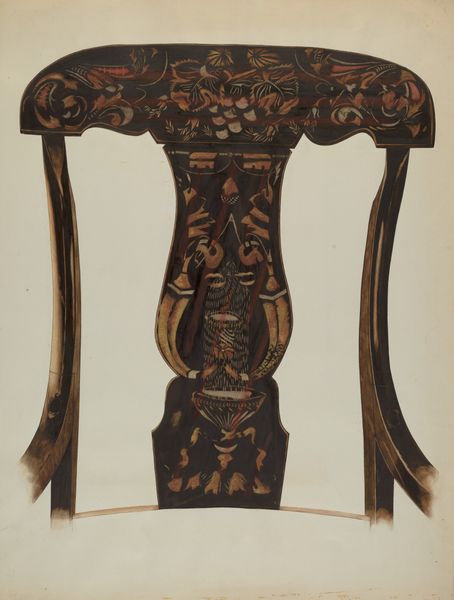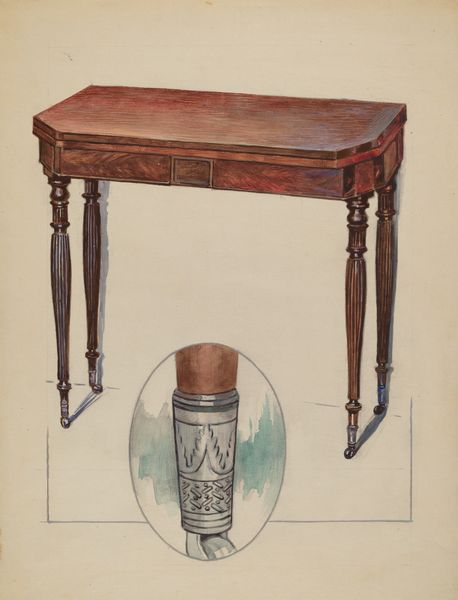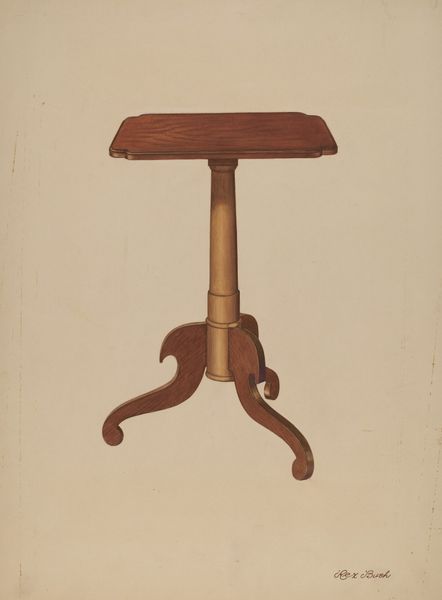
drawing, watercolor
#
drawing
#
charcoal drawing
#
watercolor
#
coloured pencil
#
academic-art
#
watercolor
Dimensions: overall: 30.9 x 22.6 cm (12 3/16 x 8 7/8 in.) Original IAD Object: 29"high; 36"long; 18"wide
Copyright: National Gallery of Art: CC0 1.0
Curator: This is Bessie Forman's "Card Table," made around 1936, using watercolor, colored pencil, and charcoal drawing techniques. Editor: It feels like a very controlled and careful rendering, almost architectural in its precision. The somber color palette reinforces that measured feeling, doesn't it? Curator: Absolutely. Think of the symbolic weight of the card table itself. In domestic spaces, it represented a zone of leisure, but also a place for social rituals and, often, the negotiation of fortunes. Editor: Yes, there's a tension there. These objects presented apart feel almost clinical. The formal approach distances us. Curator: See the deliberate depiction of carved details: the leaf patterns that recur on the legs, the pedestal, and even the disembodied fragment in the top right? These aren't mere embellishments; they're signifiers of status, connecting the table to a tradition of refined craftsmanship. Think about the enduring fascination with the past as manifested in these details. Editor: It's a studied formalism in which the artist’s academic practice reflects their rigorous approach. It is almost like a taxonomical drawing: specimen parts methodically positioned on a surface. There is a distinct feeling of coldness. Curator: Interesting. Perhaps Forman intended to dissect the object, visually stripping away its social context to reveal the underlying design principles. It speaks of the power inherent in the design. Editor: I can see that. The very even lighting also reduces drama, making us notice the pure form. Its somber palette may actually symbolize something. It is clearly an academic interpretation from its time, yet also a modern one by fragmenting it into components for contemplation. Curator: The repetition of foliate forms across all three images subtly underscores the continuity of artistic tradition. The objects and symbols speak of more than simply surface decoration, though. Editor: A coolly observant record then, rather than a warm invitation to play. An academic eye at work... I find the semiotic interplay of presentation and representation compelling. Curator: Indeed. Studying objects gives new insight into human experience, from social hierarchies to decorative expressions, to human agency itself.
Comments
No comments
Be the first to comment and join the conversation on the ultimate creative platform.

